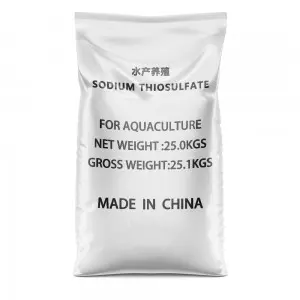



8 sodium hypochlorite
Understanding 8% Sodium Hypochlorite Properties, Uses, and Safety
Sodium hypochlorite (NaClO), commonly recognized as bleach, is a powerful chemical widely used in various industries and households. Among its many formulations, an 8% sodium hypochlorite solution stands out due to its effectiveness in disinfecting, sanitizing, and bleaching. This article will delve into the properties, applications, and safety precautions associated with 8% sodium hypochlorite.
Properties of 8% Sodium Hypochlorite
Sodium hypochlorite is a pale greenish-yellow liquid with a characteristic chlorine odor. Its concentration typically ranges from 5% to 15% for commercial products, with 8% being a common formulation for both industrial and domestic applications. The key properties of sodium hypochlorite include its strong oxidizing ability, which allows it to react with various organic substances, leading to the breakdown of bacteria, viruses, and other pathogens.
In solution, sodium hypochlorite dissociates into hypochlorite ions (ClO⁻) and sodium ions (Na⁺). The effectiveness of sodium hypochlorite as a disinfectant is attributed to the presence of hypochlorous acid (HOCl), which is formed when it reacts with water. This acid is highly effective at killing microorganisms by disrupting their cellular processes.
Applications of 8% Sodium Hypochlorite
One of the most prominent uses of 8% sodium hypochlorite is as a disinfectant in healthcare settings, where it is employed to sanitize surfaces, equipment, and tools. Hospitals and clinics utilize this solution to prevent the spread of infections, particularly in surgical and high-risk environments. Its broad-spectrum antimicrobial activity makes it effective against a wide variety of pathogens, including bacteria, viruses, and fungi.
In addition to healthcare, 8% sodium hypochlorite finds applications in the food industry. It is used for sanitizing food processing equipment, surfaces, and even fruits and vegetables to ensure safety from microbial contamination. Its use in food safety is regulated, and proper dilution and contact time are crucial for effective disinfection.
8 sodium hypochlorite

Households often utilize 8% sodium hypochlorite solutions for cleaning and disinfecting surfaces in kitchens and bathrooms, with a particular emphasis on areas prone to bacterial growth, such as sinks and cutting boards. Additionally, this formulation can be employed for laundry purposes to whiten and disinfect fabrics.
Another essential application of sodium hypochlorite is in water treatment. Municipal water treatment facilities use sodium hypochlorite to disinfect drinking water, eliminating harmful bacteria and viruses, thereby ensuring safe water for consumption. Its ability to maintain residual disinfection levels makes it suitable for ongoing water treatment processes.
Safety Precautions
While sodium hypochlorite is an incredibly effective disinfectant, handling it requires proper safety precautions. Exposure to concentrated sodium hypochlorite can cause skin and eye irritation, and inhalation of its fumes can lead to respiratory issues. It is essential to use personal protective equipment (PPE) such as gloves, goggles, and masks when handling the solution.
When using 8% sodium hypochlorite, it should never be mixed with other cleaning products, particularly those containing ammonia, as this can lead to the release of toxic chloramine gases. Adequate ventilation is crucial during application to prevent the accumulation of fumes.
Proper storage of sodium hypochlorite is also vital. It should be kept in a cool, dry place, away from direct sunlight and incompatible materials such as acids or organic substances. Containers should be clearly labeled, and the product should be disposed of according to local regulations.
Conclusion
In summary, 8% sodium hypochlorite is a versatile and powerful chemical widely used for its disinfectant, bleaching, and water treatment properties. Its applications range from healthcare to food safety and household cleaning, making it an essential item in many settings. However, responsible handling and awareness of safety protocols are imperative to mitigate potential risks associated with its use. With the right approach, sodium hypochlorite can effectively contribute to cleanliness and hygiene in various environments, promoting health and safety for all.
-
Why Sodium Persulfate Is Everywhere NowNewsJul.07,2025
-
Why Polyacrylamide Is in High DemandNewsJul.07,2025
-
Understanding Paint Chemicals and Their ApplicationsNewsJul.07,2025
-
Smart Use Of Mining ChemicalsNewsJul.07,2025
-
Practical Uses of Potassium MonopersulfateNewsJul.07,2025
-
Agrochemicals In Real FarmingNewsJul.07,2025
-
Sodium Chlorite Hot UsesNewsJul.01,2025










